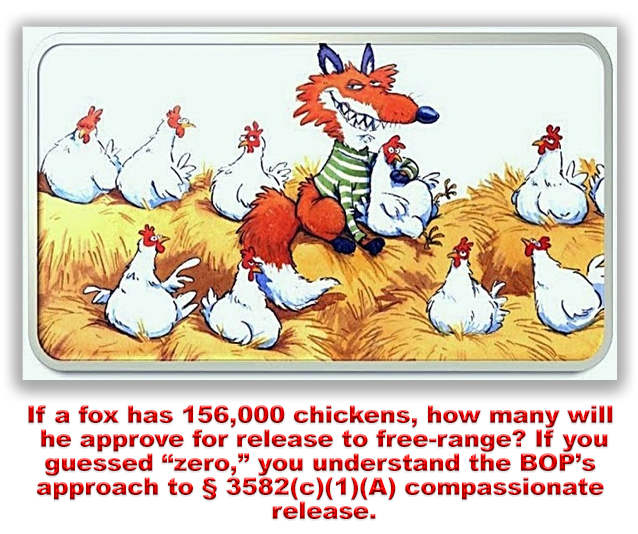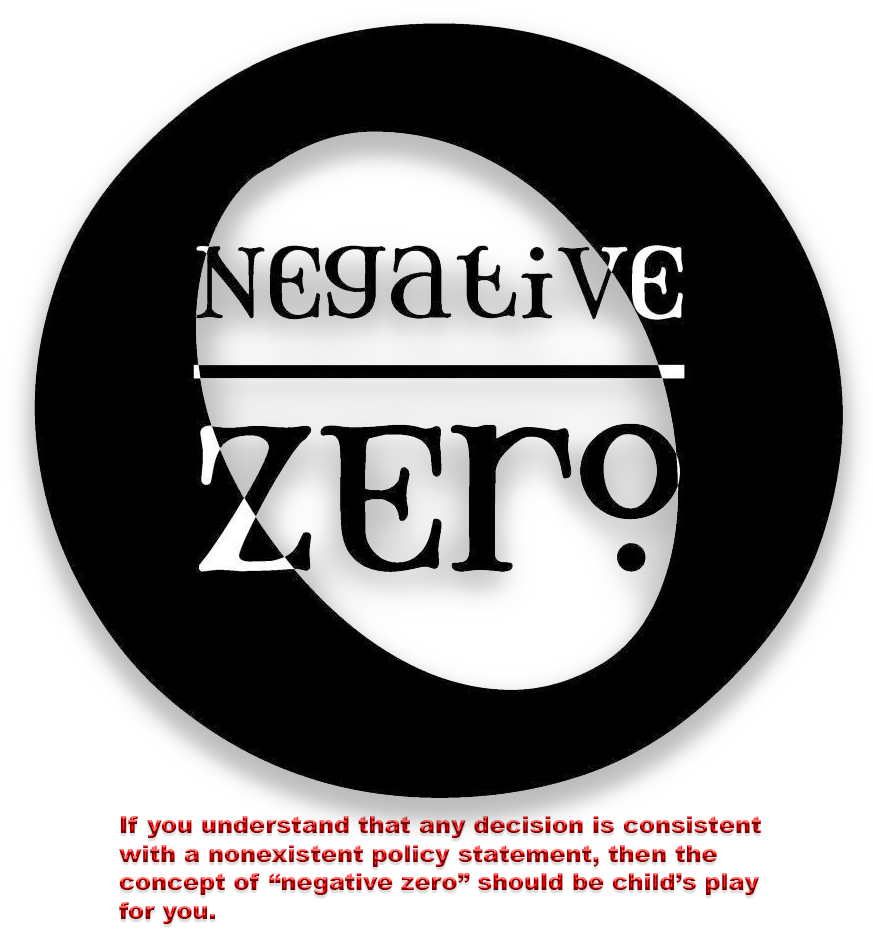We post news and comment on federal criminal justice issues, focused primarily on trial and post-conviction matters, legislative initiatives, and sentencing issues.

6TH AND 7TH CIRCUITS FOLLOW BROOKER; CLARIFY COMPASSIONATE RELEASE
If there has been any silver lining to the COVID-19 pandemic at all – and reasonable people can easily argue that there has not been – it might be the explosion in compassionate release motions brought by federal prisoners.

As I have said before, 18 USC § 3582(c)(1)(A)(i) – which permits federal judges to reduce otherwise-final sentences when “extraordinary and compelling” reasons for doing so exist – has been a “sleeper” for three decades. Until 2018, the “catch” in this sentence reduction subsection that made it such a snoozer was the requirement that only the director of the Bureau of Prisons could bring a motion under the subsection. The Director, of course, is a bureaucrat who would not have petitioned to have his or her own mother released from federal stir.
By the way, nowhere in the statute is the motion called a “compassionate release” motion. Nevertheless, the sentence release motion has been dubbed as such by the BOP, to the point that the terms “compassionate release” and “sentence reduction” are freely interchangeable.
Prior to 2018, the number of occasions on which the BOP asked a court to release an inmate early made blue moons seem like a nightly event by comparison. Congress, tired of the BOP’s nonfeasance in using the sentence-reduction subsection, modified § 3582(c)(1)(A)(i) in the First Step Act, so that now – after paying lip service to the BOP’s former role by asking the Director to bring a sentence reduction motion no one seriously believes the BOP will bring – an inmate may file the motion directly.
Sentence reduction business picked up after First Step’s passage 23 months ago, but it took the pandemic to start the land rush. Somewhere around 4,000 sentence reduction motions claiming that COVID-19’s risk to medically-vulnerable inmates have been filed in the last eight months.
But with no history of sentence reduction adjudication, there has been blessed little judicial guidance as to how a court is to analyze such a motion, the application of the Sentencing Guidelines to sentence reduction motions, and how much detail is demanded in a decision denying such a motion. These are matters of more than academic interest.
According to 18 USC § 3582(c)(1)(A)(i), a sentence reduction motion must show the existence of extraordinary and compelling reasons for the reduction and that the reduction “is consistent with applicable policy statements issued by the Sentencing Commission.” In deciding the motion, the statute directs, the court must “consider[] the factors set forth in section 3553(a) to the extent that they are applicable.”
 As is usually the case, the devil’s in the details. Lack of definitive appeals court decisions on what the subsection requires a district court to do has led to dreadfully inconsistent results, with conditions that were extraordinary and compelling to one judge are ho-hum to another. Some judges hold that the outdated Sentencing Commission guidance (it has not been changed to account for the First Step Act, because the Sentencing Commission has lacked a quorum since December 2018) must be followed, regardless of the nonsensical result such guidance dictates. And while many judges provide detail in opinions denying sentence reduction motion, others reject them with one-sentence orders that rob appeal courts of the ability to figure out the basis for the denial.
As is usually the case, the devil’s in the details. Lack of definitive appeals court decisions on what the subsection requires a district court to do has led to dreadfully inconsistent results, with conditions that were extraordinary and compelling to one judge are ho-hum to another. Some judges hold that the outdated Sentencing Commission guidance (it has not been changed to account for the First Step Act, because the Sentencing Commission has lacked a quorum since December 2018) must be followed, regardless of the nonsensical result such guidance dictates. And while many judges provide detail in opinions denying sentence reduction motion, others reject them with one-sentence orders that rob appeal courts of the ability to figure out the basis for the denial.
Finally, we are beginning to get appellate guidance on how district courts should decide 18 USC § 3582(c)(1)(A) petitions. In late September, the 2nd Circuit handed down United States v. Brooker, holding that the limitations of Sentencing Guideline 1B1.13 simply do not apply to sentence reduction motions brought by prisoners rather than the BOP. Last Friday, the 6th and 7th Circuits added materially to the body of law guiding decision-making on sentence reduction motions.
The 7th Circuit decision was a simple one. Tequila Gunn moved for compassionate release, arguing that because her medical condition made her more susceptible to the coronavirus, her sentence should be reduced to time served. The district court denied the motion, because the BOP Director had not determined her condition to be an “extraordinary and compelling” reason for sentence reduction, as required by USSG § 1B1.13.
This was the conundrum: 18 USC § 3582(c)(1)(A) only permits sentence reductions “consistent with applicable policy statements issued by the Sentencing Commission,” and that statement requires that the “extraordinary and compelling” reasons have to be determined by the BOP and no one else. That requirement is still in the Guidelines, the Circuit said, “because the Sentencing Commission has not updated its policy statements to implement the First Step Act. (It can’t, because it lacks a quorum.)”
 The 2nd Circuit solved that problem two months ago in Brooker, ruling that § 1B1.13 simply does not and cannot apply to a sentence reduction motion filed by someone other than the BOP Director. The statute says a sentence reduction must be “consistent with” all “applicable” policy statements. The 7th notes that any decision is “‘consistent with’ a nonexistent policy statement. ‘Consistent with’ differs from ‘authorized by’.” Therefore, judges are free to define for themselves what constitutes an “extraordinary and compelling” reason for reduction.
The 2nd Circuit solved that problem two months ago in Brooker, ruling that § 1B1.13 simply does not and cannot apply to a sentence reduction motion filed by someone other than the BOP Director. The statute says a sentence reduction must be “consistent with” all “applicable” policy statements. The 7th notes that any decision is “‘consistent with’ a nonexistent policy statement. ‘Consistent with’ differs from ‘authorized by’.” Therefore, judges are free to define for themselves what constitutes an “extraordinary and compelling” reason for reduction.
Meanwhile, the 6th Circuit issued a decision last Friday that is comprehensive in its instruction. Not only does the decision follow Brooker – holding that “the passage of the First Step Act rendered 1B1.13 ‘inapplicable’ to cases where an imprisoned person files a motion for compassionate release” – it provides a template for deciding such cases and outlines the detail expected of judges in sentence reduction decisions.
The 6th held that “compassionate release hearings are sentence-modification proceedings that must follow a Dillon-style test. At step one, a court must find whether “extraordinary and compelling reasons warrant” a sentence reduction… At step two, a court must find whether “such a reduction is consistent with applicable policy statements issued by the Sentencing Commission… At step three, § 3582(c)[(1)(A) instructs a court to consider any applicable § 3553(a) factors and determine whether, in its discretion, the reduction authorized by steps one and two is warranted in whole or in part under the particular circumstances of the case.”
 Finally, the 6th made clear that judges ruling on sentence reduction motions must “write more extensively in § 3582(c)(1)(A) decisions where the record bears little indication that the district judge considered all the defendant’s evidence and arguments before granting or denying compassionate release,” the Circuit said. “Absent thorough record evidence of the judge’s factual decisions, district courts should not issue single-sentence or otherwise exceedingly slim compassionate release decisions or cite § 1B1.13 or the § 3553(a) factors without any analysis of their requirements,” the appellate court said. “But as long as the record as a whole demonstrates that the pertinent factors were taken into account by the district court… a district judge need not specifically articulate” its analysis of every single 3553(a) factor. Again, we look at what the judge stated about the 3553(a) factors in both the initial sentencing and the sentencing-modification proceedings when determining whether the judge satisfied her obligation to explain.”
Finally, the 6th made clear that judges ruling on sentence reduction motions must “write more extensively in § 3582(c)(1)(A) decisions where the record bears little indication that the district judge considered all the defendant’s evidence and arguments before granting or denying compassionate release,” the Circuit said. “Absent thorough record evidence of the judge’s factual decisions, district courts should not issue single-sentence or otherwise exceedingly slim compassionate release decisions or cite § 1B1.13 or the § 3553(a) factors without any analysis of their requirements,” the appellate court said. “But as long as the record as a whole demonstrates that the pertinent factors were taken into account by the district court… a district judge need not specifically articulate” its analysis of every single 3553(a) factor. Again, we look at what the judge stated about the 3553(a) factors in both the initial sentencing and the sentencing-modification proceedings when determining whether the judge satisfied her obligation to explain.”
The 7th Circuit Gunn decision is welcome for its concurrence with Brooker. The 6th Circuit Jones decision is even better, the most comprehensive opinion on application of the sentence reduction statute to date,
United States v. Jones, Case No 20-3701, 2020 US App. LEXIS 36620 (6th Cir. November 20, 2020)
United States v. Gunn, Case No 20-1959, 2020 US App. LEXIS 36612 (7th Cir. November 20, 2020)
– Thomas L. Root

